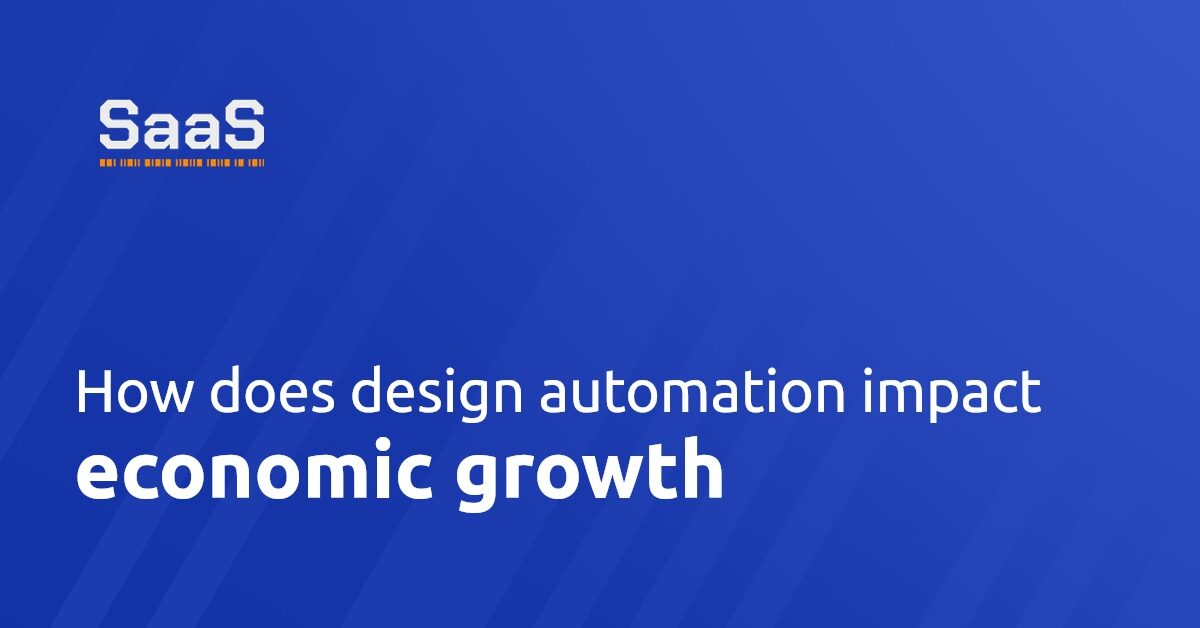How does design automation impact economic growth?
Design automation is a technology that has significantly revolutionized the global industrial landscape. It involves using computers and software to design complex systems or products. The economic growth implications of design automation are far-reaching, particularly in developing nations where technologies are generally less embedded in the industrial base.
Firstly, design automation enhances economic growth by fostering rapid industrialization. The automation of complex design tasks reduces production timelines and enhances the efficiency of production processes. When industries are more efficient, they can produce more, leading to economic growth.
Secondly, design automation also impacts economic growth through innovative product creation. The invention of new goods and services stimulates economic growth by causing a shift in consumer expenditures to novel and high-valued product streams.
Can design automation revolutionize industrial productivity?
Indeed, design automation has the capability to fundamentally transform industrial productivity. The technology allows for the development of products at a more rapid pace with increased precision and flexibility.
One noticeable implication lies in the reduction of errors. Design automation, by nature, minimizes the room for human errors that are inevitable in manual design processes. This decreased margin for error correlates directly with increased overall productivity.
Moreover, design automation allows for rapid adjustments to production lines. This agility saves time and resources when design changes or modifications are needed, considerably boosting productivity levels.
What are the benefits of design automation on job creation?
A common misconception is that design automation may contribute to job losses. However, the complex relationship between automation, job creation, and displacement shows a different picture.
On one hand, design automation does displace certain jobs, particularly those involving repetitive, low-skill tasks. Yet on the other hand, it creates opportunities for high-skilled jobs that require a solid understanding of the technology.
Moreover, design automation complements human labor, especially in intricate design tasks. For instance, the technology is programmed to handle the computational aspects of design, leaving the creative aspects to humans. This way, design automation nurtures the creation of new job roles, thereby expanding the job market.
Will design automation lead to economic inequality?
The link between design automation and economic inequality is a complex one. While design automation is beneficial in enhancing productivity and economic growth, it might simultaneously contribute to economic inequality.
For one, as design automation becomes more prevalent, the demand for high-skilled workers increases, but those with lower skill levels may find their job opportunities diminishing. This skills divide could potentially exacerbate income inequality.
Secondly, the adoption of design automation varies between industries and economies, creating a disparity in its benefits. Economies with a higher rate of adoption benefit significantly, widening the economic gap with those economies less equipped to adopt such technologies.
However, it’s critical to note that while design automation may potentially enhance inequality, the outcome solely depends on how well societies and economies are prepared to integrate and leverage these technologies. With the right policies and initiatives, design automation could indeed promote inclusive economic growth.
Therefore, while design automation brings with it several concerns, especially around income inequality, the positives it presents in economic growth, bolstered industrial productivity, and job creation cannot be overlooked. While the road may be challenging, proper management of these transitions could lead to a more prosperous and equitable economy.








